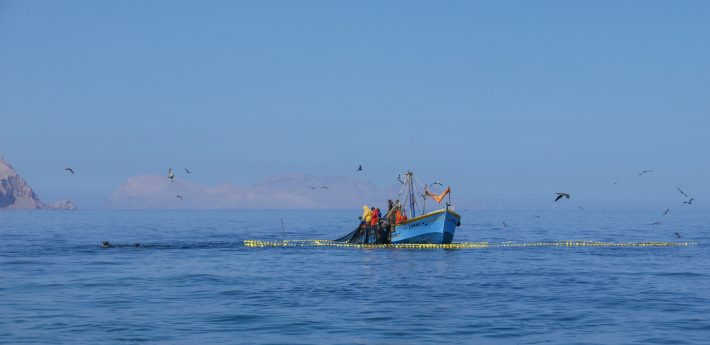How top predators and fisheries can survive on the same prey
Stockholm Resilience Centre press release.
New research published in Journal of Applied Ecology determines the amount of prey required for marine top predators to thrive, improving fisheries management.

- Resource competition between fisheries and marine top predators is a key issue for ecosystem managers
- A new bio-energetic model links top predator breeding biology and foraging ecology with forage fish ecology and fisheries management
- The framework provides spatially explicit top predator conservation targets that can be readily integrated with current fisheries management
Predators and prey
With eyes on the same prey, marine top predators like seals and seabirds are in competition with our fisheries.
This can affect their survival and have disastrous knock-on effects to the rest of the ecosystem. But measures limiting exploitation of their prey are often inadequate, partly because we lack data on how much prey many marine top predators need in order to thrive.
In a paper published in the Journal of Applied Ecology, an international team of researchers develop a way to determine the amount of prey required by top predators, improving our ability to manage the trade-off between fisheries and conservation.
Their bio-energetic model links top predator breeding biology and foraging ecology with forage fish ecology and fisheries management, and shows how the amount of prey required by top predators varies by species and population size.
“Competition for forage fish between fisheries and marine top predators is a conflict that has been difficult to resolve because we lack knowledge about prey requirements for top predators and how they vary over time and space.” – Olof Olsson, co-author.

Applying the framework
The researchers applied the framework to a Baltic Sea colony of common guillemots Uria aalge and razorbills Alca torda, two seabird species sensitive to local prey depletion.
They showed that maximum sustainable yield targets currently used to ensure sustainable exploitation of their prey – sprat and herring – are sufficient for successful breeding.
However, the results highlight the importance of maintaining sufficient prey densities in the vicinity of the colony, suggesting a need for fisheries management at a much finer scale than what is applied today.
Importance of a multispecies approach
The study also highlights the importance of a multi-species approach. Changing parameter values for one top predator had an effect on prey requirements of the other, reflecting the complexity and interactions inherent to marine ecosystems.
“The study provides a framework for how commonly available data can be used to design fishery management measures that maintain sufficient prey resources for top predators, thus contributing to the development of an ecosystem-based approach to fishery management,” conclude the authors. – Jonas Hentati-Sundberg, lead author
Methodology
The framework is built around a bio-energetic model that simulates daily time and energy budgets for guillemots and razorbills during the breeding season.
A key assumption is that birds minimize foraging distance and time as they seek to lower daily energy expenditure while still covering their energetic needs. The location and time spent foraging will then depend on forage fish distribution, breeding stage, metabolic cost for different activities as well as the energetic gain of foraging at different prey densities
The model was parameterized for guillemots and razorbills at their largest colony in the Baltic Sea, the island of Stora Karlsö, with 15 700 and 12 000 breeding pairs respectively.
The two species feed almost exclusively on sprat and herring, which are managed under the EU Common Fisheries Policy, based on targets set by the International Council for Exploration of the Seas. The amount of sprat and herring required by guillemots and razorbills calculated by the model could thus be compared to ICES’s targets.
You can read the article in full for free (for a limited time) here:
https://besjournals.onlinelibrary.wiley.com/doi/10.1111/1365-2664.13759
Like what we stand for?
Support our mission and help develop the next generation of ecologists by donating to the British Ecological Society.